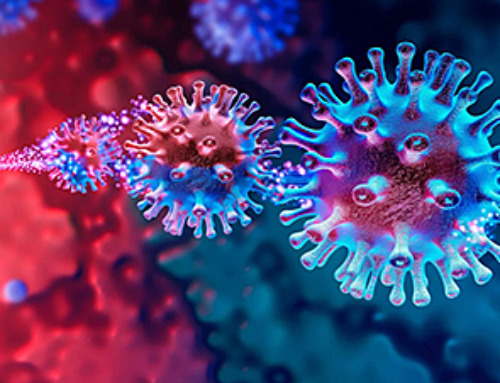Understanding hippocampal activity could improve sleep and cognition therapies.
Researchers from the University of California, Irvine's biomedical engineering department have discovered a new origin for two essential brain waves—slow waves and sleep spindles—that are critical for deep sleep. While it was traditionally thought that these brain waves originated solely from a circuit connecting the thalamus and cortex, the team's findings, published in Scientific Reports, suggest that the axons in memory centers of the hippocampus play a role.
For decades, slow waves and sleep spindles have been identified as essential elements of deep sleep, measured through electroencephalography recordings on the scalp. However, the UC Irvine-led team revealed a novel source of these brain waves within the hippocampus and were able to measure them in single axons.
The study demonstrates that slow waves and sleep spindles can originate from axons within the hippocampus' cornu ammonis 3 region. These oscillations in voltage occur independently of neuronal spiking activity, challenging existing theories about the generation of these brain waves.
"Our research sheds light on a previously unrecognized aspect of deep sleep brain activity," said lead author Mengke Wang, former UC Irvine undergraduate student in biomedical engineering who is now a graduate student at Johns Hopkins University (Wang conducted the study while at UC Irvine). "We've discovered that the hippocampus, typically associated with memory formation, plays a crucial role in generating slow waves and sleep spindles, offering new insights into how these brain waves support memory processing during sleep."
The team utilized innovative techniques – including in vitro reconstructions of hippocampal subregions and microfluidic tunnels for single axon communication – to observe spontaneous spindle waves in isolated hippocampal neurons. These findings suggest that spindle oscillations originate from active ion channels within axons, rather than through volume conduction as previously thought.
Implications and Future Research
"The discovery of spindle oscillations in single hippocampal axons opens new avenues for understanding the mechanisms underlying memory consolidation during sleep," said co-author Gregory Brewer, adjunct professor of biomedical engineering. "These findings have significant implications for sleep research, potentially paving the way for new approaches to treating sleep-related disorders."
Brewer's other research affiliations include the Institute for Memory Impairment and Neurological Disorders and the Center for Neurobiology of Learning and Memory.
By uncovering the hippocampus's role in generating slow waves and sleep spindles, this research expands our understanding of the brain's activity during deep sleep and its impact on memory processing. The findings offer a promising foundation for future studies exploring the therapeutic potential of targeting hippocampal activity to improve sleep quality and cognitive function.
Reference: "Spindle oscillations in communicating axons within a reconstituted hippocampal formation are strongest in CA3 without thalamus" by Mengke Wang, Samuel B. Lassers, Yash S. Vakilna, Bryce A. Mander, William C. Tang and Gregory J. Brewer, 10 April 2024, Scientific Reports.
DOI: 10.1038/s41598-024-58002-0
Joining Brewer and Wang in this study, which received financial support from the UCI Foundation, were William Tang, professor emeritus of biomedical engineering; Bryce Mander, associate professor of psychiatry & human behavior; and Samuel Lassers, graduate student researcher in biomedical engineering.
News
COVID-19 still claims more than 100,000 US lives each year
Centers for Disease Control and Prevention researchers report national estimates of 43.6 million COVID-19-associated illnesses and 101,300 deaths in the US during October 2022 to September 2023, plus 33.0 million illnesses and 100,800 deaths [...]
Nanomedicine in 2026: Experts Predict the Year Ahead
Progress in nanomedicine is almost as fast as the science is small. Over the last year, we've seen an abundance of headlines covering medical R&D at the nanoscale: polymer-coated nanoparticles targeting ovarian cancer, Albumin recruiting nanoparticles for [...]
Lipid nanoparticles could unlock access for millions of autoimmune patients
Capstan Therapeutics scientists demonstrate that lipid nanoparticles can engineer CAR T cells within the body without laboratory cell manufacturing and ex vivo expansion. The method using targeted lipid nanoparticles (tLNPs) is designed to deliver [...]
The Brain’s Strange Way of Computing Could Explain Consciousness
Consciousness may emerge not from code, but from the way living brains physically compute. Discussions about consciousness often stall between two deeply rooted viewpoints. One is computational functionalism, which holds that cognition can be [...]
First breathing ‘lung-on-chip’ developed using genetically identical cells
Researchers at the Francis Crick Institute and AlveoliX have developed the first human lung-on-chip model using stem cells taken from only one person. These chips simulate breathing motions and lung disease in an individual, [...]
Cell Membranes May Act Like Tiny Power Generators
Living cells may generate electricity through the natural motion of their membranes. These fast electrical signals could play a role in how cells communicate and sense their surroundings. Scientists have proposed a new theoretical [...]
This Viral RNA Structure Could Lead to a Universal Antiviral Drug
Researchers identify a shared RNA-protein interaction that could lead to broad-spectrum antiviral treatments for enteroviruses. A new study from the University of Maryland, Baltimore County (UMBC), published in Nature Communications, explains how enteroviruses begin reproducing [...]
New study suggests a way to rejuvenate the immune system
Stimulating the liver to produce some of the signals of the thymus can reverse age-related declines in T-cell populations and enhance response to vaccination. As people age, their immune system function declines. T cell [...]
Nerve Damage Can Disrupt Immunity Across the Entire Body
A single nerve injury can quietly reshape the immune system across the entire body. Preclinical research from McGill University suggests that nerve injuries may lead to long-lasting changes in the immune system, and these [...]
Fake Science Is Growing Faster Than Legitimate Research, New Study Warns
New research reveals organized networks linking paper mills, intermediaries, and compromised academic journals Organized scientific fraud is becoming increasingly common, ranging from fabricated research to the buying and selling of authorship and citations, according [...]
Scientists Unlock a New Way to Hear the Brain’s Hidden Language
Scientists can finally hear the brain’s quietest messages—unlocking the hidden code behind how neurons think, decide, and remember. Scientists have created a new protein that can capture the incoming chemical signals received by brain [...]
Does being infected or vaccinated first influence COVID-19 immunity?
A new study analyzing the immune response to COVID-19 in a Catalan cohort of health workers sheds light on an important question: does it matter whether a person was first infected or first vaccinated? [...]
We May Never Know if AI Is Conscious, Says Cambridge Philosopher
As claims about conscious AI grow louder, a Cambridge philosopher argues that we lack the evidence to know whether machines can truly be conscious, let alone morally significant. A philosopher at the University of [...]
AI Helped Scientists Stop a Virus With One Tiny Change
Using AI, researchers identified one tiny molecular interaction that viruses need to infect cells. Disrupting it stopped the virus before infection could begin. Washington State University scientists have uncovered a method to interfere with a key [...]
Deadly Hospital Fungus May Finally Have a Weakness
A deadly, drug-resistant hospital fungus may finally have a weakness—and scientists think they’ve found it. Researchers have identified a genetic process that could open the door to new treatments for a dangerous fungal infection [...]
Fever-Proof Bird Flu Variant Could Fuel the Next Pandemic
Bird flu viruses present a significant risk to humans because they can continue replicating at temperatures higher than a typical fever. Fever is one of the body’s main tools for slowing or stopping viral [...]





















